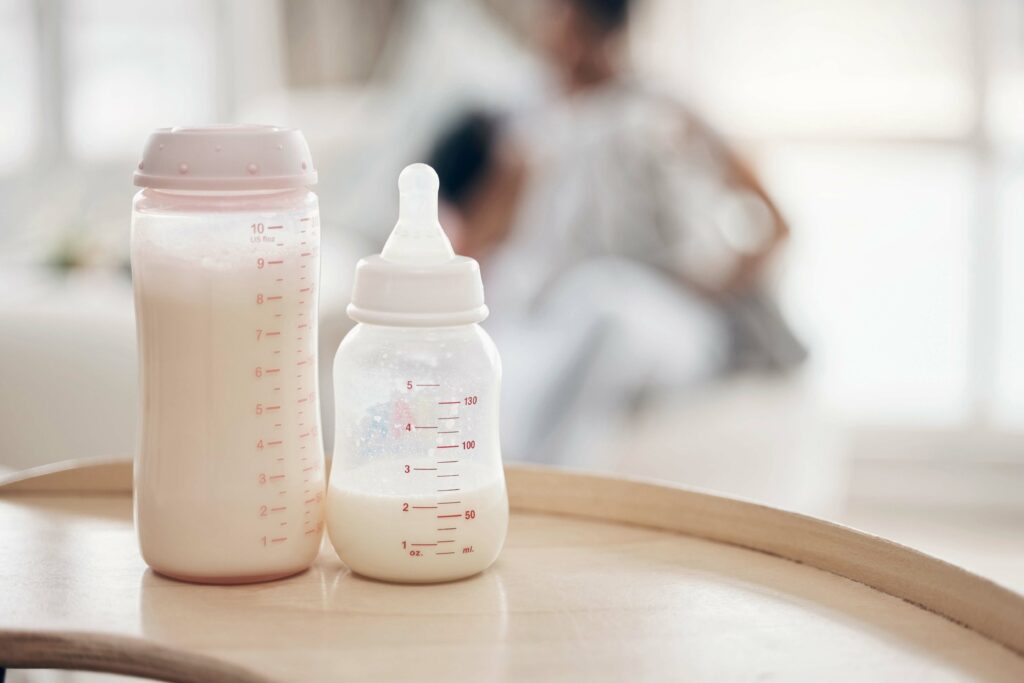Every parent wants to feel confident that their baby is receiving the nourishment they need to grow, thrive, and feel comforted throughout early development. But motherhood can be overwhelming, and breastfeeding isn’t always possible. Whether it’s due to physical discomfort, supply issues, stress, or simply a baby who struggles to latch, the challenges are real, and they can wear you down.
At Baby’s Pantry, we understand those challenges. That’s why we’re here to support families who want to choose the best formulas for their baby. Every baby deserves high-quality nutrition, and every parent deserves peace of mind.
But what is the best formula for your baby? And why are so many parents turning away from American formula and shifting to European baby formula? In this blog post, we’ll explore the reasons behind this growing movement.
Why European Formula Is Closer to Breast Milk
The truth is, no formula can replicate the natural composition and dynamic properties of breastmilk. You can, however, get as close as possible by sticking to a formula with pure, natural and authentic ingredients that mimic its properties.
Unfortunately, many US formula brands have little in common with breastmilk, containing artificial ingredients like corn syrup, maltodextrin and sucrose. Studies suggest that these additives may increase the risk of obesity in early childhood and contribute to potential digestive issues in babies.
That’s where European baby formulas like HiPP Organic and Jovie Goat Milk Formula are very different. Using ingredients like Whey, which has a similar protein composition to breast milk, and a complex blend of fatty acids such as omega-3 and 6, it mimics breast milk’s nutritional benefits. Although it is not exactly the same as breastmilk, it is possible for your baby to gain similar benefits by choosing formula with the most natural ingredients available, often relying on clean fat sources like sunflower, coconut, and rapeseed oil.

European Formula Standards vs. U.S. Regulations
European baby formulas undergo rigorous testing and are held to some of the world’s highest safety standards, overseen by the European Food Safety Authority (EFSA). These regulations surpass those set by the U.S. Food and Drug Administration (FDA), ensuring that every product is made with carefully selected ingredients and free from harmful substances.
In Europe, each ingredient must meet strict purity benchmarks and is tested for contaminants like pesticides and other toxins. Clear and honest labelling is also mandatory, so parents know exactly what their baby is consuming. Additives such as artificial sweeteners, genetically modified ingredients, and certain preservatives are banned under European law.
Manufacturers in Europe are also required to conduct frequent quality checks of their baby formula to maintain compliance and safety. In contrast, the FDA’s broader guidelines allow more flexibility in formulation and ingredient sourcing, including the use of additives and genetically modified ingredients that are prohibited in Europe. This more relaxed regulatory approach in the US means that baby formulas can reach the shelves with fewer safety checks and less transparency, leaving parents with limited assurance about what’s truly in the bottle.

Clean Ingredients: No Corn Syrup, Emulsifiers, or Unnatural Additives
European baby formulas are known for their natural and authentic ingredients. They’re free from added sugars, artificial sweeteners, and preservatives. Nearly 50% of U.S. formulas contain corn syrup, which can be harmful for your baby. It’s been linked to increased fussiness, reduced enjoyment of food, and a higher risk of obesity later in life.
Brands like Kendamil, which is known for its whole milk base and lack of palm oil or corn syrup, are a great example of how European formulas prioritise natural nutrition. Most also avoid sucrose, using lactose instead – the natural sugar found in breast milk. Lactose not only supports healthy gut bacteria but also aids calcium absorption and provides a steady source of energy for growing babies. Because it’s what babies are biologically designed to digest, formulas based on lactose are generally gentler on the stomach and much closer to the nutritional profile of breast milk.
In short, when choosing a European formula, your baby gets the nutrition they need without all the unnecessary extras that could upset their digestion or eating habits later.
European Organic Baby Formula vs. American: What’s the Difference?
When choosing an organic formula, parents expect something truly pure, natural, and trustworthy. However, in the U.S., the term “organic” on formula labels can be misleading – not all ingredients are fully organic, and the standards can vary. While some American brands do offer certified organic or grass-fed options, these formulas often contain only partial organic content. In fact, many contain as little as 70% organic ingredients.
European formulas, on the other hand, are required to have at least 95% organic ingredients. They also follow stricter regulations, ensuring they’re free from pesticide residues and harmful additives like guar gum, pectins, or carrageenan. They must contain at least 30% of carbohydrate calories from lactose, which is the sugar found naturally in breast milk.
European formulas don’t allow artificial sweeteners like corn syrup or rice syrup, keeping things as natural as possible. They’re also more likely to offer whole milk-based options, which is rare in U.S. formulas.
Overall, European organic formulas offer higher-quality, more transparent options for your baby.

Understanding the Stages of European Baby Formula
In the U.S., baby formulas are often a “one-size-fits-all” solution, with just one formula for infants up to 12 months, and another for toddlers. This doesn’t offer much variety or tailoring for each stage of your baby’s development.
European formulas, however, recognise that babies go through significant changes in their first year. Whether you’re starting with Stage 1 Kendamil Formula or moving to Stage 3 Nannycare Goat Formula, each product is tailored to your baby’s nutritional needs as they grow.
- Stage 1: For newborns, this formula provides essential nutrients with protein from cow’s or goat’s milk to support early development.
- Stage 2: For babies 6 months and older, this formula adds extra calories and iron to support growth and energy needs.
- Stage 3: For babies over 10 months, Stage 3 formulas are enriched with iron, vitamins, and calcium to assist in development as they approach toddlerhood.
- Stage 4: For toddlers over 1 year, Stage 4 formulas contain more calories, fats, and proteins to support their changing diet and nutritional needs.
Conclusion
Choosing the right formula for your little one can feel overwhelming with so many options available. However, the most important thing is to select a formula that supports your baby’s digestion and meets their nutritional needs at every stage of growth.
The European baby formulas available at Baby’s Pantry are carefully selected to ensure they are packed with essential vitamins, minerals, and nutrients. We prioritise your child’s health and growth, giving you peace of mind as parents, knowing they are getting the best possible nourishment.


